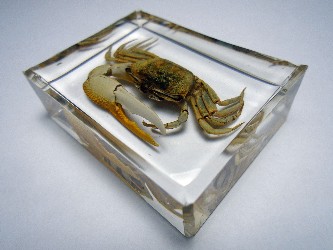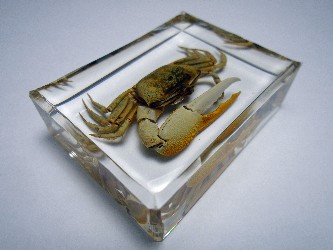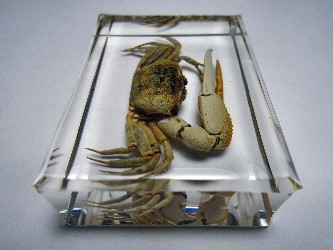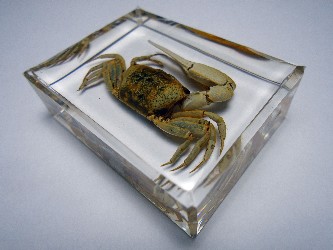











 |
 |
 |
 |
 |
 |
 |
 |
 |
 |
 |
 |
|
Crabs coastal a guide to the crabs of New Zealand  CLICK FOR DOWNLOAD --------------------------------- Classification Phylum Arthropoda Subphylum Crustacea Class Malacostraca Order Decapoda Infraorder Brachyura Family Ocypodidae Subfamily Ucinae Genus Uca Species Uca Forcipata
.............................. CRAWFISH PRODUCTION MANUAL
CLICK FOR DOWNLOAD |
UCA FORCIPATA FIDDLER CRAB
A fiddler crab, sometimes known as a calling crab, may be any of approximately 100 species of semi-terrestrial marine crabs which make up the genus Uca. As members of the family Ocypodidae, fiddler crabs are most closely related to the ghost crabs of the genus Ocypode. This entire group is composed of small crabs, the largest being slightly over two inches across. Fiddler crabs are found along sea beaches and brackish inter-tidal mud flats, lagoons and swamps. Fiddler crabs are most well known for their sexually dimorphic claws; the males major claw is much larger than the minor claw while the females claws are both the same size.
Like all crabs, fiddler crabs shed their shells as they grow. If they have lost legs or claws during their present growth cycle, a new one will be present when they molt. If the large fiddle claw is lost, males will develop one on the opposite side after their next molt. Newly molted crabs are very vulnerable because of their soft shells. They are reclusive and hide until the new shell hardens.
Male versus male competition also occurs as fighting with the major claws. If a male loses his larger claw, the smaller one will begin to grow larger and the lost claw will regenerate into a new (small) claw..
Found in mangroves, in salt marshes, and on sandy or muddy beaches of West Africa, the Western Atlantic, the Eastern Pacific and the Indo-Pacific, fiddler crabs are easily recognized by their distinctively asymmetric claws.
Fiddler crabs communicate by a sequence of waves and gestures; males have an oversized claw or chela; used in clashes of ritualised combat of courtship over a female and signal their intentions between conspecifics. The movement of the smaller claw from ground to mouth during feeding explains the crabs' common name; it looks as if the animal were playing the larger claw like a fiddle. Fiddler crabs live rather brief lives of no more than two years (up to three years in captivity). Male fiddler crabs use the major claw to perform a waving display as a form of female courtship.
|